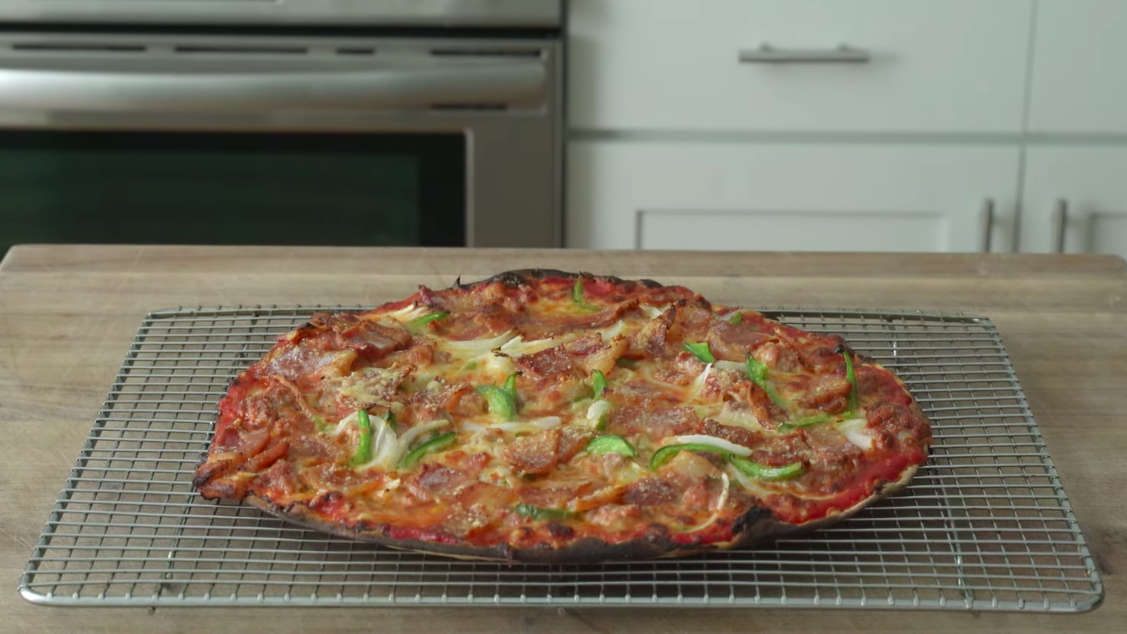Why You Don't Need Yeast To Make A Fantastic Pizza
Yeast is probably the trickiest ingredient to work with in pizza. You don’t always need it.
Pizza dough starts with all the same ingredients you find in bread: flour, salt, water, and yeast. Or so you might think. The United States of pizza is vast and wide, and with all that variety, you know that those ingredients are going to vary from style to style. NPR reports that Italian scientists are experimenting with how to make a puffy yeastless pizza, and they may have figured out exactly how to do it.
Why make a pizza dough without any yeast?
Why even bother trying to make yeastless dough a reality? Yeast and pizza go hand in hand, right? Well, it turns out that the lead scientist behind the project, Ernest Di Maio, is allergic to the yeast in leavened food, and severely so. If he consumes yeast, the side effects sound pretty awful.
"I have to go somewhere and hide because I will be fully covered with bumps and bubbles on the whole body," he told NPR. "It's really brutal." Ouch. But living in Naples, where pizza was invented, it's nearly impossible to avoid the ubiquitous and delicious stuff, along with yeasty bread.
Di Maio is a materials scientist who works at the University of Naples Federico II. He researches the formation of bubbles inside materials like polyurethane—a subject that's interestingly related to pizza, in a way. Bubbles, of course, are a key part of what makes Neapolitan pizza so appealing. The gas released by yeast helps create that chewy, soft, yet light and airy texture that Di Maio was seeking.
How science makes yeastless pizza possible
With the assistance of graduate students Paolo Iaccarino (who moonlights as a pizzaiolo on the weekend) and Pietro Avallone, Di Maio set out to create a classic Neopolitan pizza crust sans yeast. They also brought in chemical engineer Rossana Pasquino, who studies how materials like plastic and toothpaste flow.
"Pizza [dough] is a funny material, because it flows, but it has to be also like rubber," said Pasquino. "It has to be elastic enough [when it's cooked] to be perfect when you eat it."
Eventually, the team landed on a technique using a specialized tool called an autoclave. Autoclaves use high pressure and temperatures to sterilize equipment in hospitals and other places where you absolutely need a clean environment, like tattoo parlors. Starting with a yeast-free dough base, the group used the autoclave to apply pressure, heat, and pressurized gas. Once they figured out the right combination of those elements, they were able to create a puffy little piece of cooked pizza-like crust that was about the size of... half a penny. Baby steps. The results were published in Physics of Fluids.
Do you need yeast to make a good pizza?
Maybe this is just my American perspective, but pizza is such a versatile concept that I believe you don't necessarily need yeast to make a great pie. The thing is, you might need to change your expectations of what your ideal pizza's architecture can be.
I previously wrote about cobbling pies together with whatever you have on hand, like flour tortillas, which don't contain yeast. The end result is quite far from a Neapolitan-style pie, but can indeed be delicious in a different way that is still (spiritually, at least) a pizza. I say this as someone who used to make pizza for a living.
How to make pizza dough without yeast
If you want something a little more robust, of course, you can make your own pizza crust at home. One yeastless version I like is this ultra-thin pizza dough recipe from King Arthur, an all-around excellent baking resource. Instead of using yeast, the dough is leavened with a touch of baking powder.
The result is a very, very, thin crust that you'll have to roll out (be patient, it's not easy). Once that thing is baked in the oven, you'll be rewarded with a unique pizza that can, because of its cracker-like nature, handle a ton of toppings. It'll be crisp and light, the ideal vehicle for the sauce and cheese of your dreams. Plus it's like a love letter to the Midwest.
So, can you have a fantastic yeast-free crust creation that's still pizza? Of course you can, if you keep an open mind. But if Neapolitan is your ride-or-die pizza style, you might have to start saving up for an autoclave of your own.
